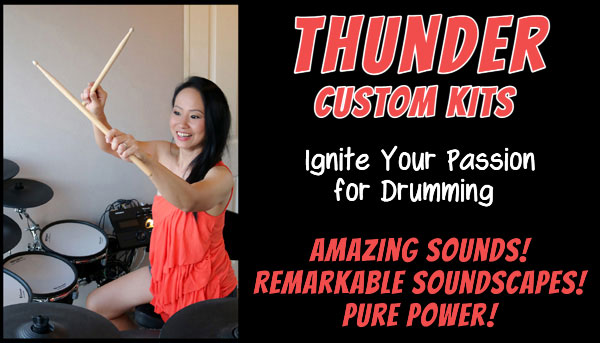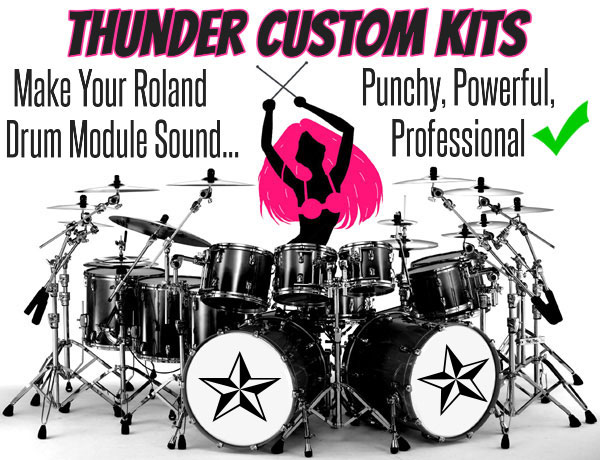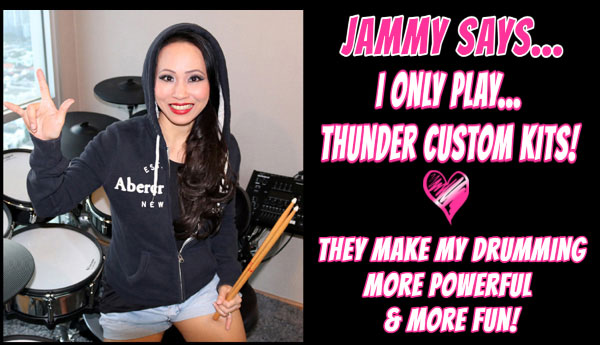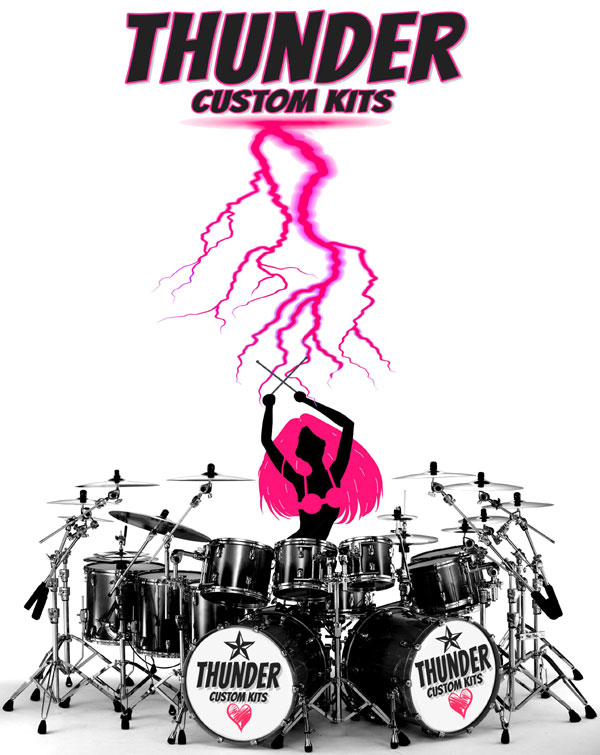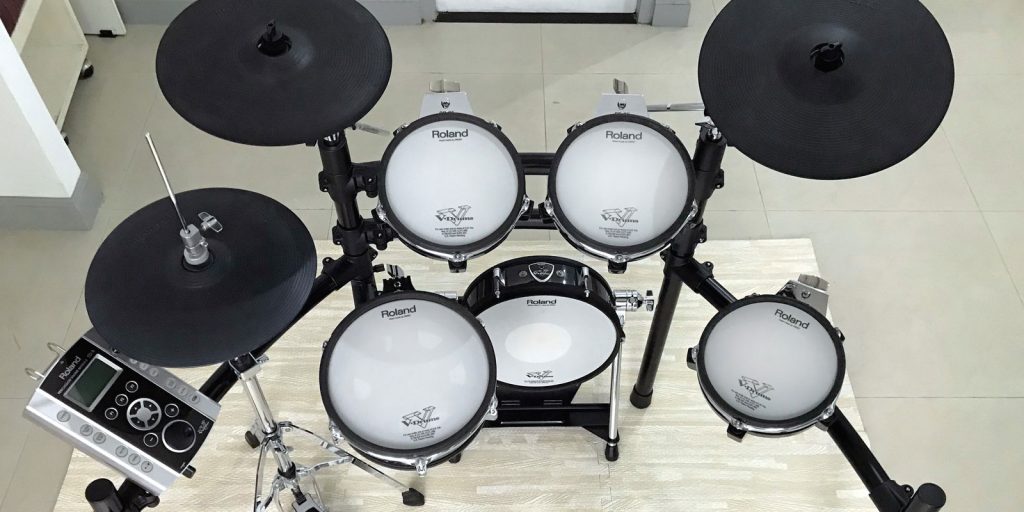
Can I play electronic drums in an apartment? This is a common question that I receive every week at my shop Bangkok Drum. On this subject, I can speak with lots of experience, since I live in a high-rise condo and have several sets on the 29th floor of my residential building that I play every day!
Electronic drums have many awesome perks. However, one of the best benefits is their ability to be very quiet… Quiet enough to use even when living in an apartment.
This post will provide some important guidance for drummers who want to play in an apartment living situation. I will detail the best and worst gear for quiet practice and provide you some helpful hints to prevent you from getting into trouble with your neighbors!
Problems Playing Electronic Drums in an Apartment
Acoustic noise is only part of the problem when considering using edrums in an apartment. Vibration is a completely different issue and is the real problem for most drummers. This vibration can be caused by any percussive strike on the set, but is most often largely associated with using the kick drum. The kick tends to send vibrations directly down into the floor, which can be heard and even felt by those who reside downstairs.
Noise and vibration can also travel upwards and laterally through walls and ceiling, but this is less common and more preventable than noise that travels down into the floor. Therefore, if you are on the first floor, with no one living below you, you will be in a much better place to play any type of edrums without any issues. So, my first piece of advice is to get a place on the ground level, whenever possible!
The quality of the construction will also greatly affect the transmission of sound and vibration. Wood floors tend to make rooms into big vibrating speakers essentially. Meanwhile concrete slab flooring tends to reduce noise issues considerably. Older construction tends to radiate noise and vibration more than newer builds. These are general rules, but certainly not set in stone. Carpet will help, as will treating the acoustics of the room with sound absorption material. However, vibration may still be a problem for people downstairs.
There are various components that make up an edrum kit. The parts that you hit will generate noise, but even the parts you do not hit can add to or reduce vibration, such as the hardware. Some hardware (generally the more expensive types of racks and mounts) offer better acoustic insulation to prevent noise and vibration from disturbing your neighbors. However, the pads themselves are the real sources of noise and vibration, so let’s explore these in greater detail.
Edrum Pad and Cymbal Noise and Vibration
E-cymbals range from loud to soft in sound levels. Since you will be incessantly tapping on your hats and ride, this is worthy of consideration in order to reduce noise. Most rubber cymbals are slightly less noisy than most (muted) metal e-cymbals. In most cases, rubber cymbals will not produce noise levels loud enough to disturb neighbors, unless you play very hard all the time.
Mesh drum pads are mostly very quiet and rarely are the source of disturbances. Thicker mesh heads (3 ply and thick plies) tend to be much louder than thinner heads. Mesh is a great choice for people who are concerned about noise levels. Meanwhile., rubber pads tend to produce a distinct tap sound and much more vibration that can be an issue. This is one reason why the lowest price kits tend to be the worst noise offenders! Similarly, acoustic conversions and full shell e-drums can also be louder, simply because there is more material to vibrate. Converted acoustic kicks are very difficult to keep quiet, but it can be done, such as the case in the wonderful ATV aDrum kick, which is exceptionally quiet, but still can vibrate the floor.
Most “noise” complaints are actually vibration complaints. These tend to come from the kick pedal hitting the kick drum primarily and also possibly from the hi hat pedal, especially if the drummer tends to play time with the pedal quite aggressively. These vibrations go directly into the floor and can be heard and felt from below, causing really annoying disturbances for neighbors. Treating the kick issue tends to solve the vast majority of these complaints, without further fixes for the pads or cymbals…
I already wrote a dedicated post on electronic kick drum noise and vibration, so feel free to see my tips in that article for help!
Playing Electronic Drums in an Apartment Without Damage
If you rent (or if you own the unit yourself!), you do not want your drums to cause damage to the apartment. The nasty metal spikes on the kick drum, kick pedal and hi hat can destroy flooring surfaces. Therefore, it is a great idea to get a protective rug to prevent marring the surface. I recommend 2 layers of puzzle mats (like the kind you might put on the floor of a child’s playroom), with a nice thick rug over them. If you overlap the seams of the mats and use a dense rug, you will eliminate lots of ambient noise and vibration, as well as protect the floors and prevent anything from moving around on your kit when you play. This is a cheap solution that works great!
Edrum Recommendations for Apartments
Whenever possible choose your apartment based on your desire to play drums. First floor is best. Commercial grade construction with concrete slab flooring is best. If this is not an option, then at least buy a set that will help minimize noise.
To this end, I recommend mesh head pads with dual ply heads whenever possible. These will feel great, but not be overly loud and percussive. Go with rubber cymbals and do not feel the need to hit anything too hard. You can set your module to get huge sounds even from light playing, if desired. There is no need to beat your drums so hard, especially if noise is a concern…
Kick drums might pose a real problem. I suggest using the Roland KT10, since it works perfectly with all brands of edrums and is quiet and self-insulated from vibrating the floor. When used with a rubber mat and rug, you will not have any issues in virtually any environment. A Roland or Yamaha quiet kick pedal, or the less popular Roland KT9 (much cheaper than KT10) will also work well, but will not feel great. Avoid kicks that produce extra noise, such as rubber pads, material heads (Roland KD9, KD10) acoustic conversions (unless really muffled heavily!) and Roland VAD shells. These will be loud and likely to get you into trouble quickly!
A bit of planning can solve noise problems before they occur and keep you on friendly terms with neighbors and landlords alike. If all else fails, you can always build a noise and vibration insulating platform, like the famous “tennis ball riser”. This is a cheap and relatively simple fix that is guaranteed to work in almost every environment. Best of luck and happy e-drumming!

